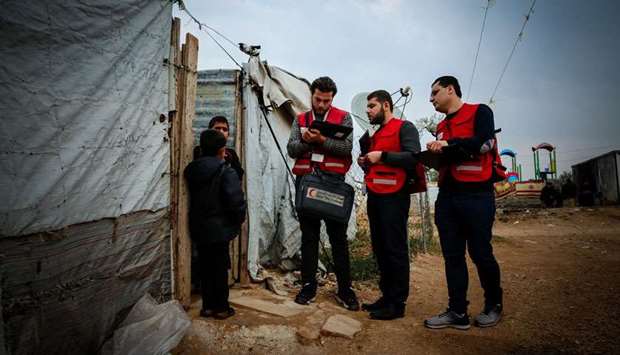Qatar Red Crescent Society (QRCS) has recently completed the external monitoring of the measles and rubella vaccination of children in Syria, in partnership with the World Health Organization (WHO) and the United Nations Children's Fund (UNICEF).
A trained QRCS team accompanied the inoculators, who are members of Syria Immunization Task Force, to monitor the vaccination process and ensure compliance with international standards.
Over 16 consecutive days, the campaign covered 1.4 million children of the 5-15 age group at all schools, health centers, and permanent vaccination hubs in the northern governorates of Aleppo, Idlib, and Hama. It was an opportunity to eradicate measles and rubella, by reaching out to those uncovered under previous campaigns.
As an external observer, QRCS contributed 100 supervisors to inspect the preparedness of the centers, validity of injections and vaccinations, performance of vaccinators, and safe delivery of vaccinations to children.
QRCS enjoys a long experience in the monitoring of child vaccination campaigns. Its representation mission in Gaziantep, Turkey, regularly holds intensive training courses for vaccination supervisors, both at the mission's premises and inside Syria, to develop their supervisory, planning, follow-up, and assessment skills.
QRCS has already monitored several polio, measles, and rubella vaccination campaigns inside Syria, in cooperation with UN agencies, local charities, and global humanitarian providers. These drives served millions of children in Aleppo, Idlib, Latakia, Hama, and other Syrian governorates.
In October, QRCS monitored a polio vaccination campaign, in partnership with the UNICEF and WHO, with a total of 38,300 under-5 beneficiaries in Afrin City.
The process comprises three phases:
1. Pre-campaign: The inspectors visit the main centers to make sure that the centers and equipment are well in place;
2. During campaign: Then, QRCS supervisors examine vaccine samples, check storage conditions for inconveniences, and accompany vaccinator teams to assess their performance at health centers and households and take notes; and
3. Post-campaign: Lastly, the results are analyzed for lessons learnt, to be considered in future campaigns.

